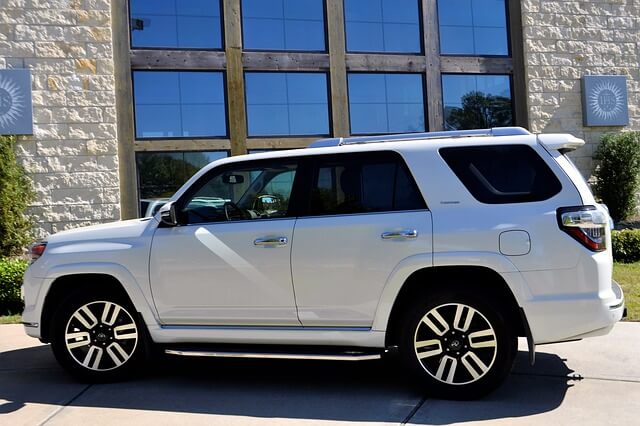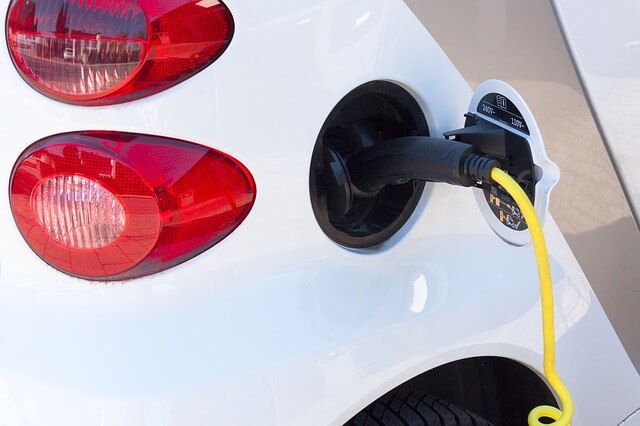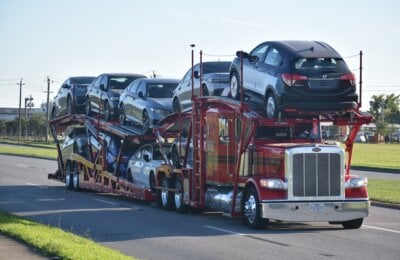
Reading Time: 7 minutes
In the fast-paced world of the automotive industry trends, we are witnessing an era of remarkable transformation. This shift is driven by groundbreaking automotive industry trends that are redefining our travel experiences. Today, we’re diving into 15 of these dynamic trends that are not just altering the automotive landscape, but also reshaping how we think about transportation.
The automotive industry has rapidly evolved, moving beyond the traditional, simply designed cars. Now, our roads are becoming home to sophisticated vehicles equipped with cutting-edge technologies like the Internet of Things (IoT), big data, and cloud computing. These advancements are not just about luxury; they’re about creating smarter, safer, and more efficient modes of transport. However, challenges such as inconsistent cellular connectivity in certain regions still pose hurdles in fully realizing these advancements. Join us as we explore the exciting journey of the automotive industry into the future.
Automotive Industry Trends | Car Shipping Trends Explained
The motor vehicle industry has seen many innovations in recent years. The fact that various parts are being optimized using big data analytics platforms, is just one. This gives original equipment manufacturers (OEMs) an advantage in an increasingly competitive market. It adds impact on the manufacturing of vehicles, as well as affecting the supply chain and end-user experience.
Reverse cameras have become the norm. We are seeing the emergence of electric engines, solar panels, hands-free parking, and driver-less cars. Dash cams are going to be the norm in top-spec cars. In addition to this, we will see how artificial intelligence defeats carjackers, etc.

15 Most Revolutionary Trends
#1 – Enhanced In-Car Entertainment
In-car entertainment has evolved significantly within the automotive industry. Although not entirely new, manufacturers increasingly prioritize it, especially with the advent of self-driving vehicles. These advancements no longer require drivers’ constant attention. Consequently, we can anticipate exciting developments. These include custom music systems, enhanced TV screens, augmented reality window displays, and advanced in-car live streaming capabilities, adding a new dimension to our travel experience.
#2 – Bigger, Better Solar Power
Solar power in vehicles is taking a leap forward. Researchers are experimenting with innovative materials like carbon resin and polymer fiber for door panels. These panels are designed to house solar batteries effectively. Importantly, as research progresses, these panels are becoming significantly smaller and more efficient, heralding a new era of eco-friendly automotive power solutions.
#3 – How AI Can Defeat Carhackers
Recent Years in Car Industry
Recent years have seen an increasing demand for vehicle computer security. Modern cars now act as advanced computer networks, featuring artificial intelligence to provide live virus protection. However, hacking can still compromise performance and security.

#4 – Usage Based Vehicle Insurance
The Internet of Things has swept across businesses globally, fueling a surge of innovation in the Fintech and insurance industries. This has enabled insurers to reach out to a broad range of sectors, including policyholders, motor, and property.
Insurers can now use the Internet of Things to assess risk. They can estimate necessary reserve, and create pricing policies. Technology has also created major opportunities. These include usage based insurance, within the automotive insurance sector. This involves a premium calculation that is based on the following.
- the type of vehicle
- distance travel
- and the driver’s behavior.
Do Not Take the Risk
This type of insurance helps to encourage drivers to practice safe behavior to help prevent accidents. Fewer accidents mean reduced claims payouts and an improved bottom line for the insurers.
Insurance companies can use usage-based vehicle insurance to provide consumers with pay-as-you-drive, pay-how-you-drive, and distance-based insurance. Soon this will be complemented by HMI and AI applications. Autonomous and semi-autonomous fleets will also increase due to IoT.
#5 – Telematics (V2G and V2X Technology)
Telematics have been pivotal in connecting vehicles to other devices. This is in order to send and receive real-time traffic alerts and warnings related to parking management systems, collision avoidance, and more. Types of vehicle connectivity technologies that use the IoT include V2V, V2X, V2I and V2G.
Vehicle to everything (V2X) uses wireless technology to exchange information between vehicles. Whatever it connects, including other vehicles, devices, the cloud, the grid and infrastructure.
V2X technology has many functions, ranging from increasing traffic safety to optimizing traffic flow, reducing emissions, and saving time through lane departure warning. It also offers lane change assistance, obstacle detection, collision warning, road departure warning, rollover warning, read impact warning, and read accident warning.
#6 – Vehicle Health Monitor
Automatic biometric identification systems are emerging. Primed for commercialization in mid-range and economic cars. These automotive industry trends are projected to make great strides in the next four to five years. They are estimated to hold significant market share by 2025.
Sleep deprivation, fatigue and drunk driving are leading causes of fatal accidents, so car makers are looking for ways to deliver warnings. Sensors in seat belts and steering provide key input for in-car health monitoring systems.
#7 – Truck Platooning
Autonomous vehicle technology is for all car types. It is estimated that by 2020 freight transportation will be revolutionized by vehicle-to-vehicle communication technology. Driver Assistive Truck Platooning technology will use communication between two or more trucks to transform the freight transport industry. Trucks will drive closely and at high velocity behind the platoon leader.

#8 – Crossover Vehicles
In recent years, crossovers have become increasingly popular among drivers who value the comfort of an SUV and the frugality of a sedan. The perfect balance of the two. In the future, we can expect to see continued experimentation and the rollout of more interesting, reliable crossovers. This is a trend that has been on the rise for the past few years.
#9 – Ride Sharing
Research shows that people are less emotionally attached to their cars than before. Following this it has resulted in increased uptake of car sharing – a strong automotive industry trend, even in EMEA and APAC regions. The constant drive to reduce carbon footprints is driving this.
According to Statista, ride sharing services will continue to improve the passenger’s experience with a variety of options to enhance their comfort, including drinks, snacks and music.
#10 – Multi-Terrain Vehicles for Millennials
Millennials dominate most markets, and they desire practical, affordable vehicles with high ground clearance and a raised driving position – perfect for handling urban congestion.
Multi-terrain vehicles offer operational ease and comfort. Combined with fuel efficiency, five-door utility, high-end audio, and heated leather seats, this makes them the perfect choice for millennials. The automotive industry trend has skyrocketed revenues for manufacturers, with Seat, Peugeot, Kia, Hyundai, and Ford leading the crossover niche.
#11 – Large SUVs for Baby Boomers
While millennials dominate most innovations, baby boomers are the leaders in the automotive industry. As the majority of baby boomers are nearing retirement, they want cars that enable them to travel on their own, comfortably.
With five-door configuration, a sizable trunk and more, baby boomers seem to prefer spending their money on large SUVs. Newer SUVs offer much improved fuel efficiency compared to the initial models that first hit the market. This is another bonus for frugal people who are thinking about their retirement savings.

#12 – 3D Printing
We will see bigger investments from major vehicle manufacturers pursuing this automotive industry trend. Some big-name players in the automotive industry have followed in the footsteps of Local Motors, who first launched Strati. This revolutionary automotive industry trend will enhance the cost-effective nature and safety benefits of 3D printed cars.
#13 – Autonomous, Driverless Vehicles
Autonomous vehicles have been shown to increase passenger comfort, enhance traffic management, and reduce accidents.It’s no wonder this is one of the automotive industry trends companies focus on most. In the coming years, we will see fully autonomous, driverless vehicles from various automotive giants emerge onto our roads.
#14 – Electric Cars
In just two years, electric car sales have reached ten million units. Volkswagen, Daimler AG and General Motors have also staked a claim in this lucrative market. They did this by developing their own electric car models.
Electric cars continue to increase market share and unfortunately this is due to the decline of available non-renewable energy sources. Furthermore this automotive industry trend is set to continue to grow in the immediate future.

#15 – Innovative Key Designs
Get excited about vehicle keys! Some car manufacturers prefer to keep things simple. Whereas companies like BMW remain on the cutting edge of automotive industry trends and innovation.
BMW introduced a futuristic new smart-key that features a 2.2″ touchscreen. Now you can check your A/C settings and vehicle service information right on your key.
Jaguar has a new option for active drivers who don’t want to worry about looking after keys. The new F-Pace Activity Key is a completely waterproof bracelet which can be used to unlock the car.
Volvo is currently testing a keyless approach that would allow a smartphone app to manage a variety of vehicle functions.
Considering these revolutionary automotive industry trends, it is clear to see that vehicle technology is evolving at a rapid pace, and that innovation knows no bounds. Watch this space to learn more about how these trends will impact on the car shipping industry.
“Looking for a quicker solution to your car shipping needs? Dive into our in-depth article on Expedited Car Shipping Services to discover the benefits, insights from real customers, and why it’s the preferred choice for many. Fast track your knowledge today!”




